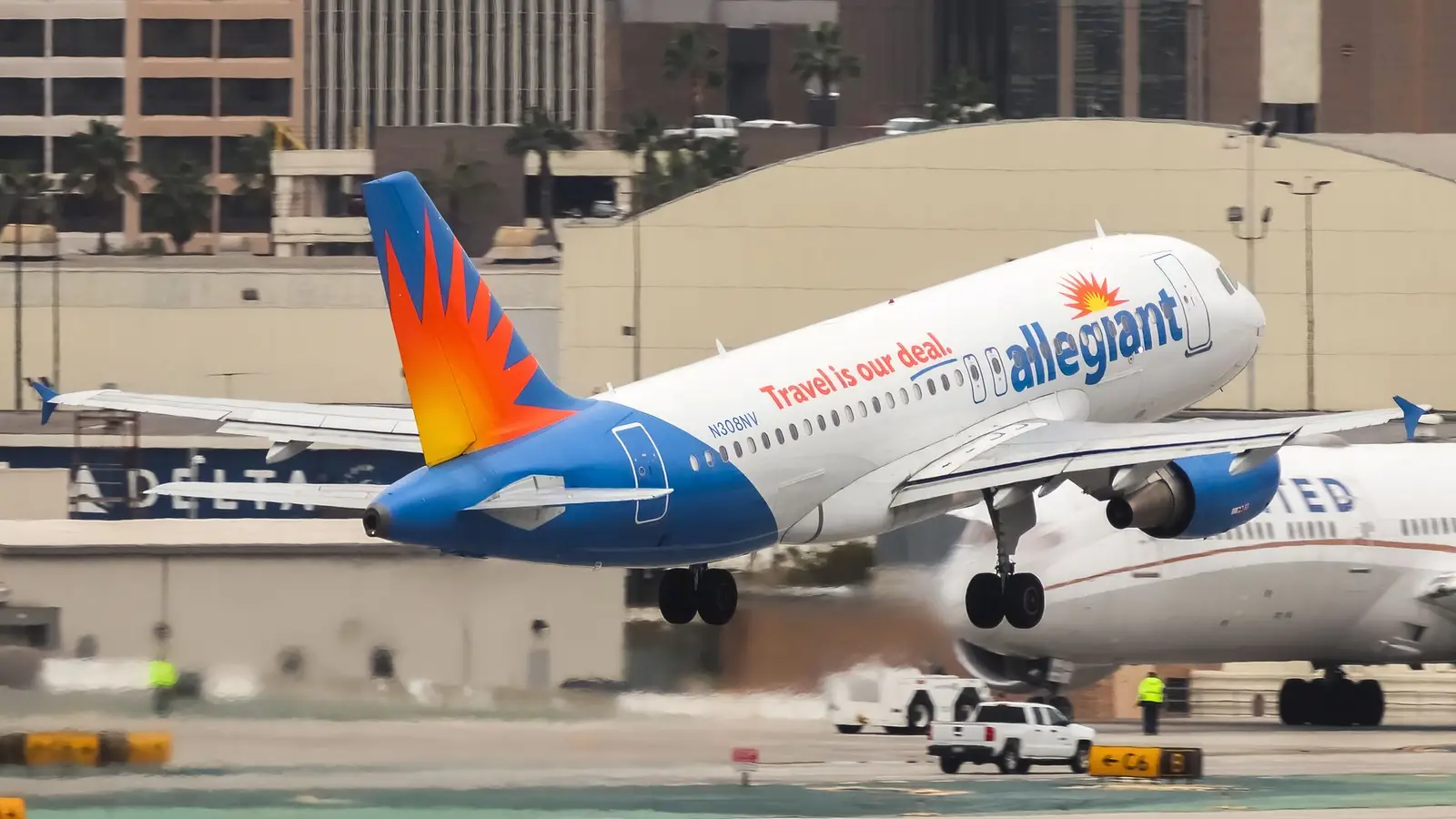
Aviation Week is reporting that Allegiant Air has scheduled its final flights out of Los Angeles International Airport. Its last flight out of the airport will depart on January 3, 2026, ending a 17-year presence at LA’s primary airport. Instead, the airline is shifting to Hollywood Burbank Airport, citing rising operating costs at LAX and a desire to leverage lower fees and more favorable infrastructure.
Allegiant began service at LAX in May 2009 and designated it a base in 2016. But management says LAX’s airport charges, gate fees, and terminal costs have grown so much that they no longer align with Allegiant’s ultra-low-cost model. By contrast, Burbank offers lower per-passenger costs, simpler terminal operations, while still attracting strong demand among travelers in the northern Los Angeles basin.
Looking At The End Of Allegiant At LAX
Allegiant is terminating all operations at Los Angeles International Airport. The final routes will fly to Cincinnati, Ohio, and Bellingham, Washington, with the final flights departing on January 3, 2026. Following this, Allegiant will concentrate on Hollywood Burbank Airport, where it will commence its first routes on February 12, 2026.
Burbank is closer to a major chunk of the population in Los Angeles and is also closer to many popular tourist attractions, such as Universal Studios and Downtown LA. Of course, this makes it farther from other areas of the city, but Allegiant is a leisure-focused airline, and as such, Burbank is likely more convenient for many of Allegiant’s customers.
Given the relatively low frequency of the affected routes (both of which are twice weekly), the impact of these removals is relatively modest. Allegiant had already announced that it would close its LAX crew base and stop basing aircraft at the airport back in March, while cutting nine routes.
The Impact And Results Of This Change
The final two routes to Cincinnati and Bellingham are relatively thin. Allegiant relies heavily on seasonal tourism and price-sensitive travelers. Eliminating the routes from LAX reflects the airline’s move away from a major international hub toward smaller, more cost-efficient airports, which will likely be a better fit for the carrier and its target market.
Delta Air Lines will become the only airline operating between LAX and Cincinnati, which it flies either six times weekly or daily during the winter months, primarily using the Airbus A321neo. Allegiant, however, is the only airline currently connecting Los Angeles with Bellingham, and as such, it will commence service to Bellingham from Burbank on February 12. This will also start alongside a new route from Burbank to Provo, Utah, which will launch on the same day.
Allegiant has long been scaling back its Los Angeles operations, and it’s never been a major player at the airport. As such, its exit leaves a relatively minor impact on the local market, while the new service from Burbank essentially gives customers in Bellingham the same travel options as before. Passengers originating or traveling to Cincinnati, meanwhile, will have to take Delta.
Allegiant’s Motivation For Leaving LAX
In an age where budget airlines across the US have been struggling, Allegiant’s exit may seem like another sign of the low-cost carrier business model failing in the country. Allegiant Air, however, is not like other US budget airlines. Not only has the carrier generally been profitable, but its business and operating model are far different than those of larger competitors.
Allegiant focuses on serving small, underserved communities by linking them to popular tourist destinations a few times a week. Demand is low, but so is the competition, and the low fares on these nonstop flights help Allegiant create its own demand. The airline also keeps costs low, and most notably, primarily uses older, second-hand aircraft to keep capital costs low and economically reduce utilization (although Allegiant is receiving new Boeing 737 MAX aircraft).
LAX is an expensive airport to operate out of, and while demand is high from all around the country, so is the competition. The Cincinnati route, for instance, connects a Delta hub to a former Delta hub, and the competition is likely why the route won’t be resumed out of Burbank. In Allegiant’s case, exiting LAX represents the airline trimming costs by shifting airports.



